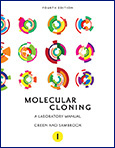Analysis of stress granule assembly in Schizosaccharomyces pombe
- Chun-Yu Wang1,
- Wei-Ling Wen1,
- Daniel Nilsson2,
- Per Sunnerhagen2,
- Tien-Hsien Chang3 and
- Shao-Win Wang1,4
- 1Institute of Molecular and Genomic Medicine, National Health Research Institutes, Zhunan Town, Miaoli County 350, Taiwan
- 2Department of Cell and Molecular Biology, Lundberg Laboratory, University of Gothenburg, S-405 30 Göteborg, Sweden
- 3Genomics Research Center, Academia Sinica, Nankang, Taipei 11529, Taiwan
Abstract
Stress granules (SGs) are cytoplasmic aggregates of RNA and proteins in eukaryotic cells that are rapidly induced in response to environmental stress, but are not seen in cells growing under favorable conditions. SGs have been primarily studied in mammalian cells. The existence of SGs in the fission yeast and the distantly related budding yeast was demonstrated only recently. In both species, they contain many orthologs of the proteins seen in mammalian SGs. In this study, we have characterized these proteins and determined their involvement in the assembly of fission yeast SGs, in particular, the homolog of human G3BP proteins. G3BP interacts with the deubiquitinating protease USP10 and plays an important role in the assembly of SGs. We have also identified Ubp3, an ortholog of USP10, as an interaction partner of the fission yeast G3BP-like protein Nxt3 and required for its stability. Under thermal stress, like their human orthologs, both Nxt3 and Ubp3 rapidly relocalize to cytoplasmic foci that contain the SG marker poly(A)-binding protein Pabp. However, in contrast to G3BP1 and USP10, neither deletion nor overexpression of nxt3+ or ubp3+ affected the assembly of fission yeast SGs as judged by the relocalization of Pabp. Similar results were observed in mutants defective in orthologs of SG components that are known to affect SG assembly in human and in budding yeast, such as ataxia-2 and TIA-like proteins. Together, our data indicate that despite similar protein compositions, the underlying molecular mechanisms for the assembly of SGs could be distinct between species.
Keywords
- G3BP-like protein Nxt3
- TIA-like proteins
- ataxia two homolog Ath1
- deubiquitinating protease Ubp3
- fission yeast stress granules
Footnotes
-
↵4 Corresponding author.
E-mail shaowinwang{at}nhri.org.tw.
-
Article published online ahead of print. Article and publication date are at http://www.rnajournal.org/cgi/doi/10.1261/rna.030270.111.
- Received September 6, 2011.
- Accepted December 11, 2011.
- Copyright © 2012 RNA Society











